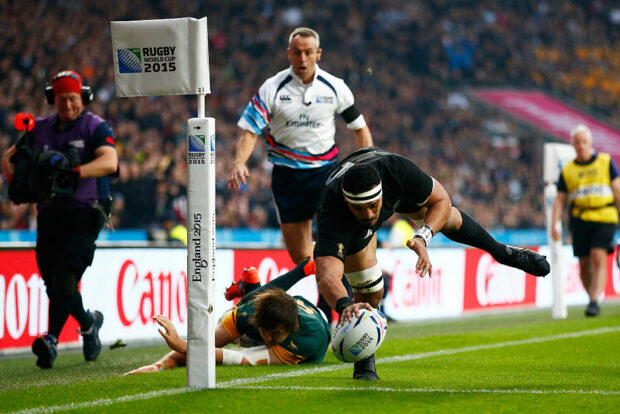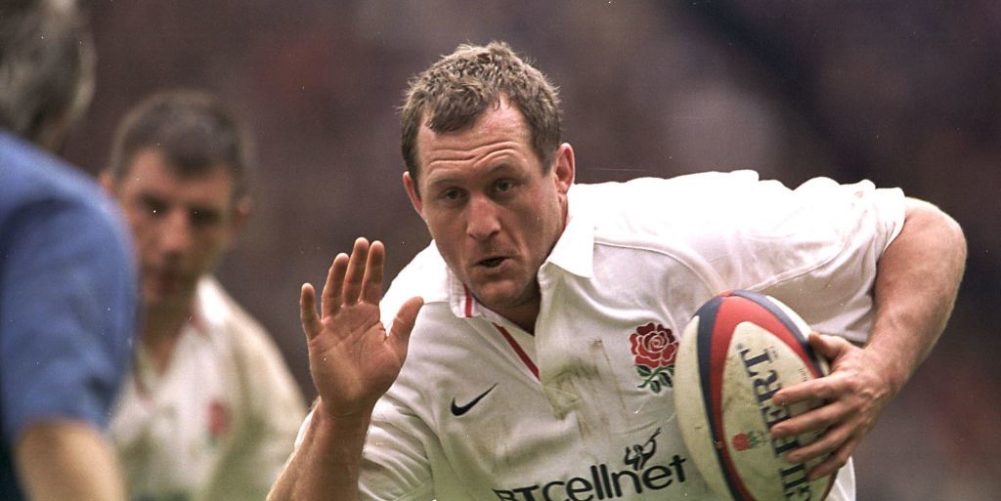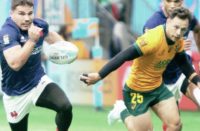VERSATILITY is the buzz word at present and there is much to be said for experimenting and not being confined by convention. But when push comes to shove, history shows there is also much to be said for specialisation.
So it's high time to praise specialist number sixes who seem to becoming endangered creatures in the modern world which prefers the double openside option and interchangeable all-singing, all-dancing back rows with everybody slotting in at the whim of the coach.
Blindside flankers – in old parlance – have always been the most underrated players in the game. Not for them the glory boy antics of those flash openside flankers whose best moments are there for all to see in the wide open spaces and for the snappers to capture.
Nor do they indulge in the greedy accumulation of tries off the back of others' work that marks out those dilettante headline grabbers at No.8!
No, I am talking about proper coal-face workers and heroes who have filled the No.6 shirt over the decades, the players who knit every great side together. When it comes to World Cup and Lions tours they reign supreme. Most Grand Slam teams feature such craggy faced warriors as well. Without them most packs are unbalanced and vulnerable.
The Lions in 1971? Peter Dixon and Derek Quinnell. 1974: Roger Uttley; 1989: Mike Teague; 1997 Tim Rodber; 2013 Sean O'Brien; 2017 Sean O'Brien (although he wore seven with Sam Warburton wearing six). 1980 England Grand Slam? Uttley again. 1991 Teague; 1992 Micky Skinner; 1995 Rodber again; 2016 Chris Robshaw. Recent Wales Grand Slams? 2005 Ryan Jones; 2008 Jonathan Thomas and Jones; 2012 Jones again. 2019 Josh Navidi.
And the ultimate test, World Cup finals. In 1987 it was Alan Whetton for New Zealand, in 1991 Willie Ofahengaue for Australia and in 1995 the late great Ruben Kruger with South Africa.
Four years later it was Owen Finnegan with Australia and in 2003 Richard Hill was the man for England. By 2007 Schalk Burger had settled in that position for South Africa and then we had the 2011 and 2015 double for the remarkable Jerome Kaino. Finally, came Pieter Steph du Toit last year, wearing seven but effectively playing six as is the custom in South Africa.
Some of those listed could play seven – Hill, O'Brien and Burger definitely – but ultimately all were much better at six.
So there is the dilemma right here. Talented players can, of course, play in different positions, many of the bigger sixes I listed above – Uttley, Finnegan, Rodber, Jones, Kaino – also won caps as second rows but in no instance did their contribution at lock remotely compare with their imput at six, their specialist position.

All of which poses the obvious question, why do we not cherish our blindside flankers more? Why is the game seemingly trying to deny their role and status?
Clearly the mania by World Rugby and their referees to make every game into a try fest has a big role to play with the almost fanatical determination to abolish anything that can slow the game down like a good old-fashioned maul or a properly contested ruck.
Fast ball has become the mantra in the mistaken belief that it automatically produces more attractive and commercial rugby. On the contrary, what you sometimes end up with is yawn-inducing multi phase attacks that take 3-4 minutes meandering from one side of the pitch to another.
We praise it reluctantly – such continuity and fitness – while inwardly hating it with a vengeance like a long clay court rally that drones on interminably until somebody makes a mistake.
There is a massive emphasis on the fleet-footed jackal who is being allowed to get away with way too much. More often than not I would ping the jackal for preventing release. Many make no serious attempt to win the ball and within a trice the referee blows up. Let that be played out to a proper conclusion and that is where the muscular, piratical, sixes come into play.
Meanwhile lineouts have become so slick and your two main jumpers so well protected that there isn't usually an overwhelming need for a third jumper whch is where the likes of Quinnell, Uttley, Rodber and Kaino scored highly.
Another factor that has crept in is that precious scrum-halves are so well protected by the laws these days and have so much time to play the ball, that there is less and less opportunity for the hard case six to scrag them and sort them out if they try and dart down the blindside or spend too much time playing the ball at the back of a ruck.
Scrums, by common consent, are a mess and the lack of a No.6 could be a factor. When you have a Roger Uttley or Jerome Kaino tucking in behind the prop the scrum can become much more solid or, on the opponent's ball, menacing. Too many flankers these days seem to lean on gently, heads up and barely breaking sweat.
You can occasionally see why coaches are looking for other options and against some opponents it will seem an attractive proposition, but I confidently predict the World Cup winners in 2023 will not be fielding a hybrid at blindside, but a specialist. The joy of six will never diminish.


























